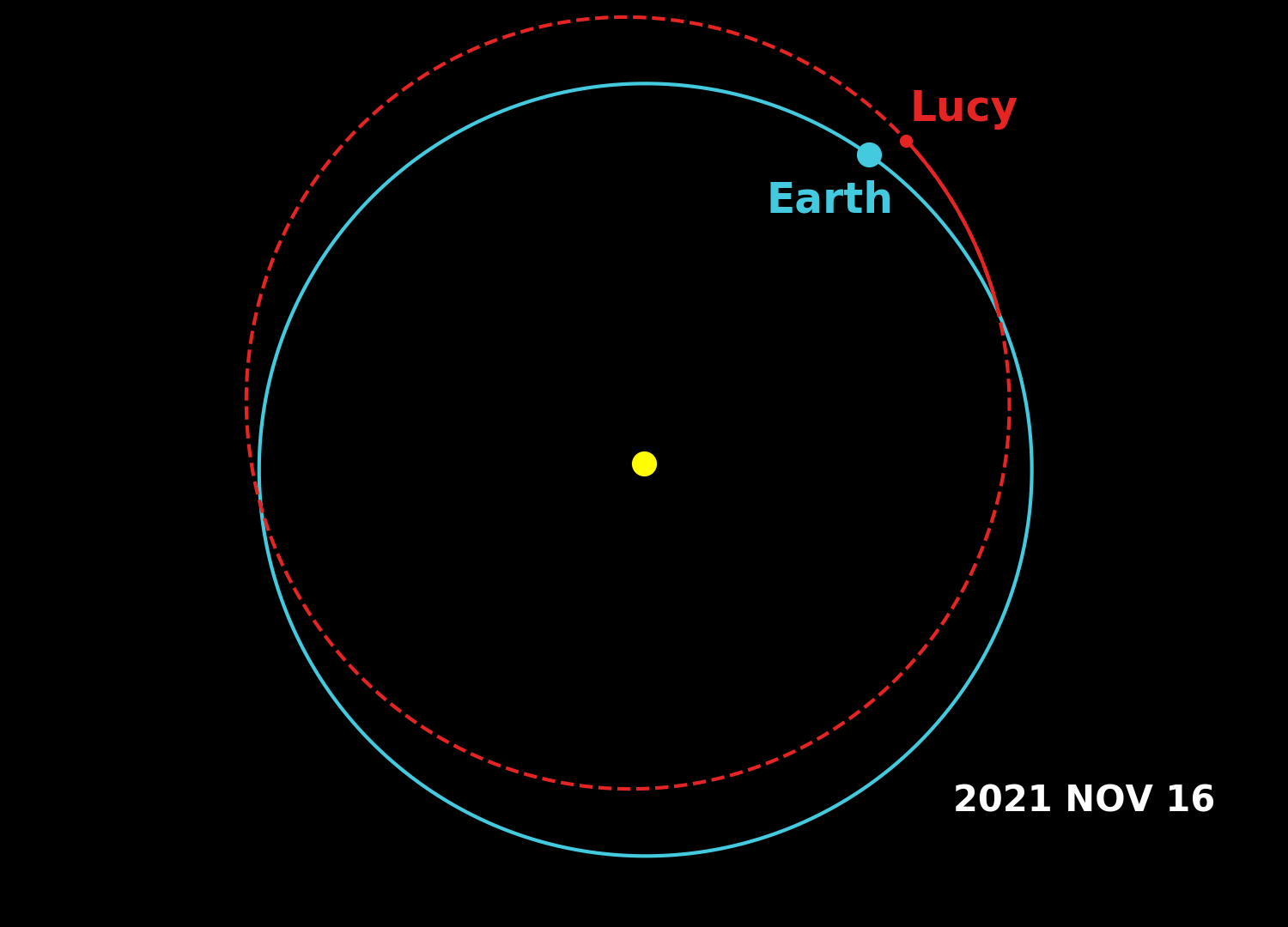Lucy's First Month in Space
Nov 16, 2021
One month ago today, the Lucy spacecraft began its epic 12 year journey to the Trojan asteroids in a beautiful pre-dawn launch from Cape Canaveral, Florida. Lucy launched at the very first opportunity, at 5:34am ET on Oct 16, 2021.

The launch was perfect, placing Lucy precisely where it needed to be. So precisely, in fact, the navigation team was able to skip the first planned trajectory correction maneuver. Lucy is now over 9 million miles from Earth (15 million km), moving away from us at over 14,000 mph (23,000 km/hour).
On solar system scales, this is actually quite slow. In fact, Lucy is currently on an orbit quite similar to the Earth, and will return to Earth in one year for a close flyby of Earth to receive a gravity assist. That maneuver will give the spacecraft more energy to help Lucy on its way out to the Trojan asteroids.

Lucy’s first month in space has been busy.
After discarding the fairing that protected Lucy as it raced out of the Earth’s atmosphere, and separating from the rocket that placed Lucy on its first orbit, Lucy’s first major task was to deploy the huge solar arrays will power Lucy throughout the 12 year mission.
While one side unfurled perfectly, data from the other side seemed to indicate a problem. The left solar array hadn’t latched, and it was only returning about 90% of the expected power. This led the team to conclude that the array had not fully deployed. Despite this, spacecraft is safe, stable, and collecting plenty of power (the lanyard used to extend the solar array is holding it in place). Therefore, the anomaly team on the ground has had plenty of time to carefully and methodically work to understand the problem and determine the best way forward, while the rest of the team focuses on the remainder of the spacecraft systems as planned. Find the most up-to-date information on the solar array status at blogs.nasa.gov/lucy.
With the solar arrays producing ample power, the other spacecraft subsystems were powered on in turn. The high gain antenna, the electrical power systems, thermal control system, and data handling systems all worked as expected. The command was sent for Lucy to release its Instrument Pointing Panel (IPP) out of the stowed position, preparing the spacecraft to get its first light data.

Each instrument was powered up in turn, starting with the Terminal Tracking Camera (T2Cam) and then followed by L’TES, L’Ralph, and finally L’LORRI. All instruments returned preliminary data indicating that they are working as expected. Instrument and other system testing an calibrations will continue for the next few months as Lucy adjusts to its new life in space.
One month down, and 136 months to go!
Banner Image: Lucy’s Launch from Cape Canaveral Space Force Station. Credit: NASA/Bill Ingalls